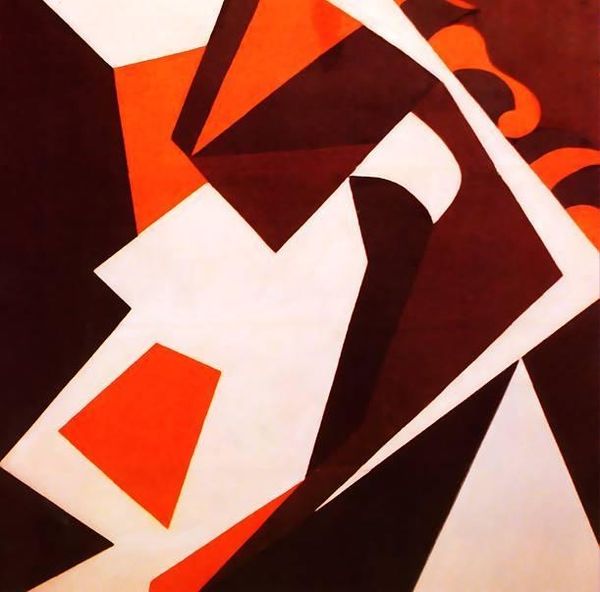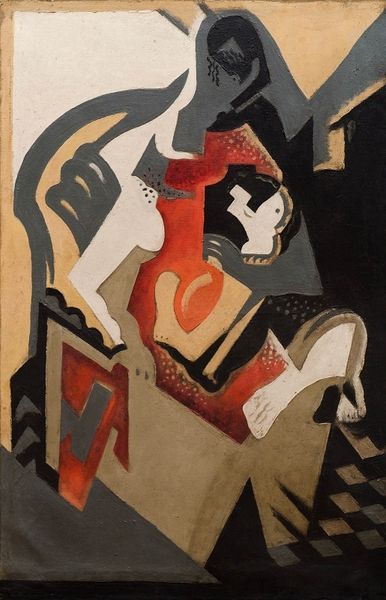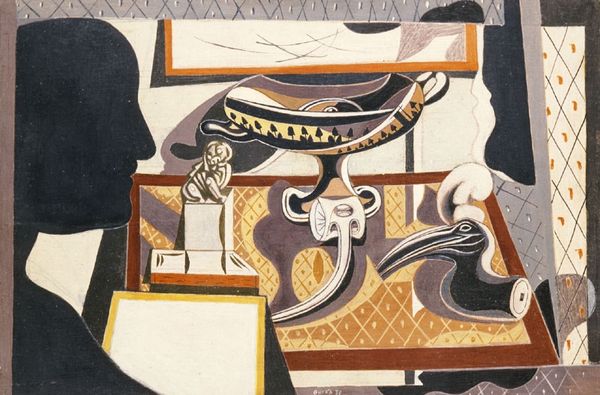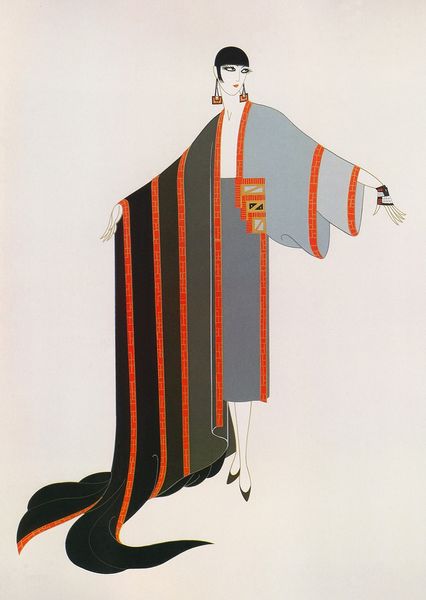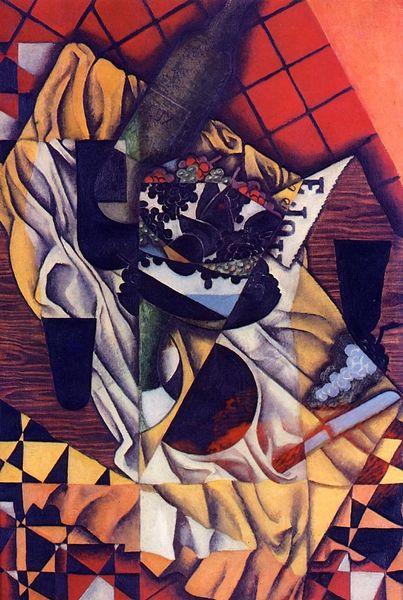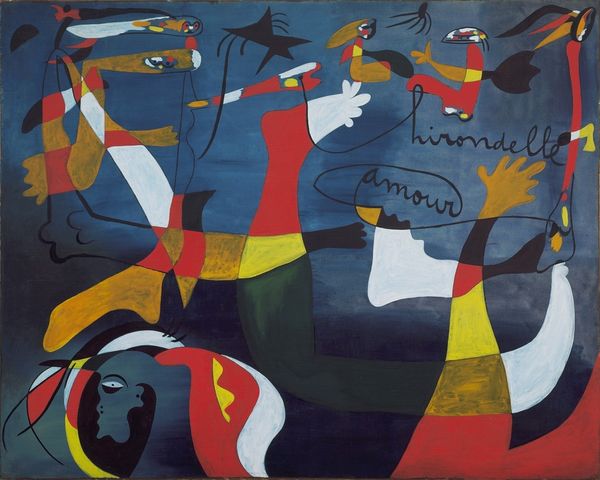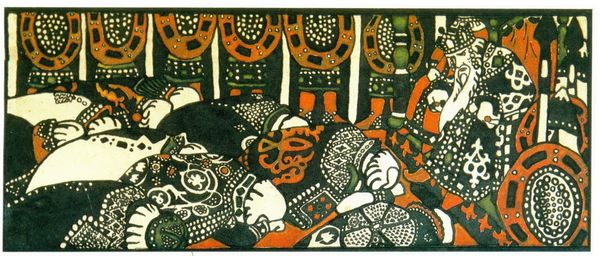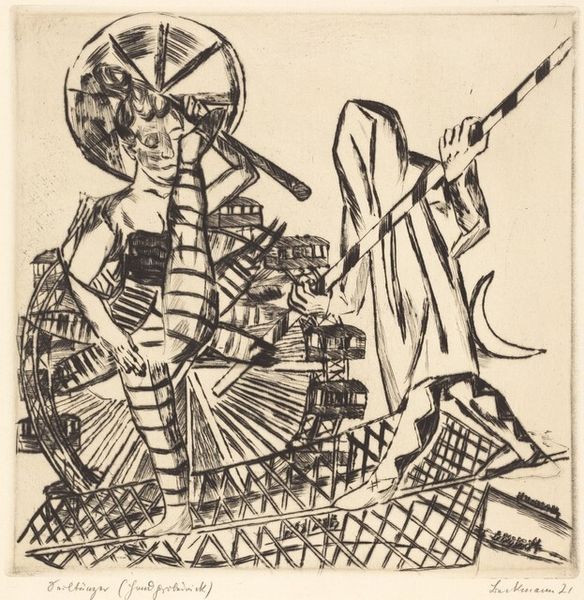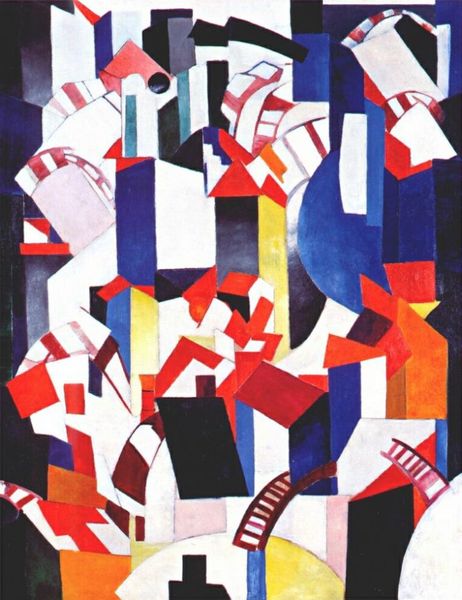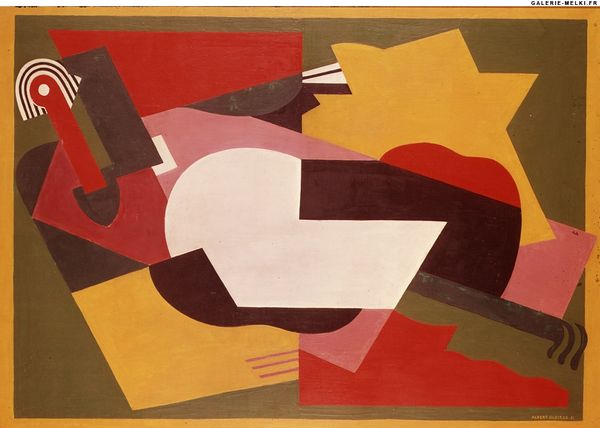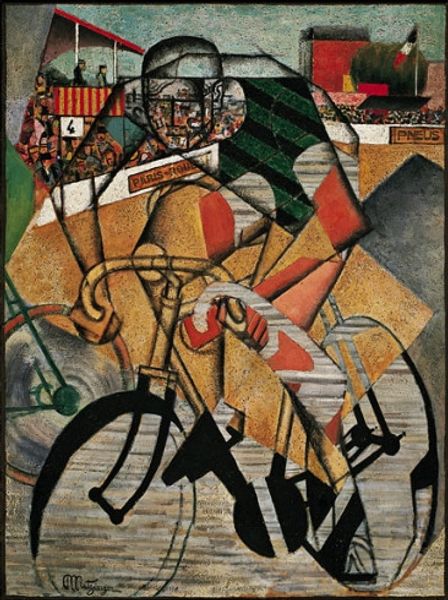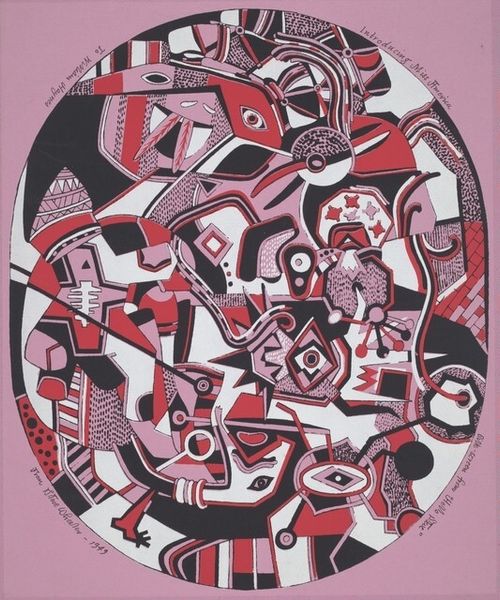
tempera, painting
#
medieval
#
narrative-art
#
tempera
#
painting
#
war
#
figuration
#
folk-art
#
naïve-art
#
naive art
#
orientalism
#
christianity
#
russian-avant-garde
#
history-painting
#
christ
Dimensions: 13.9 x 16.4 cm
Copyright: Public domain
Curator: So striking! Nicholas Roerich’s “St. George the Victorious” from 1920 is up next. It’s tempera on canvas, and immediately you see the flatness and vibrant palette he's chosen. What's your take on it? Editor: I find it refreshing, this visual shortcut—a legend stripped down to its essential conflict and materiality. Roerich wasn't just painting an icon; he was making a thing, using medieval techniques like tempera to revive folk art in a revolutionary era. Curator: Precisely. You know, looking at the bold, almost woodblock-like style, I wonder if Roerich wasn't consciously simplifying the tale to appeal to a broader audience, a populace perhaps disillusioned by war and eager for clear-cut heroes. It feels very…graphic. Editor: "Graphic" in every sense! Note how he employs the medium itself. Tempera, that ancient binder, forces a directness—no glazing, no subtle blending, only pure color laid carefully, deliberately. Like the morality of the story: direct action against perceived evil. Consider the labor of grinding pigments. It mirrors the effort of heroism itself. Curator: That's a beautiful connection. There’s something deeply resonant in his conscious turn toward a mythic past in a time of rapid industrial and social change. You almost sense him saying, "Here's something enduring amidst the chaos." But I’m left contemplating that flattened saint, a deliberate subversion of academic naturalism. Almost childlike, yet charged with fierce determination. Editor: Yes! Naïve, some might say, but utterly powerful in its simplified symbolism. The tools, the materials, the techniques speak as loudly as the image itself about endurance, craft, and accessible mythology, even propagandistic. Think of what Roerich would do later designing sets; he always understood the impact of bold, clean iconography. Curator: Absolutely. His work became about building, preserving culture, both in Russia and across Central Asia. One way of many we could look at how the revolution changes his priorities. Editor: True, that shift in focus, thinking of the materials he accessed on these spiritual journeys opens doors for interpretation in how this vision changed over time. This is quite profound!
Comments
No comments
Be the first to comment and join the conversation on the ultimate creative platform.
